|
|
|
|
|
Tester
Bio |
|
Name: |
Bob Dorenfeld
|
I'm an active hiker,
snowshoer, skier, and of course
backpacker. Home base is the Southern
Colorado Rockies, ranging from alpine
tundra to piņon-juniper scrub and desert
at lower altitudes. Many of my backpack
trips are two or three nights (sometimes
longer), and I usually shoulder about 30
lb (14 kg). My style is lightweight but
not at the expense of enjoyment, comfort
or safety - basic survival gear plus
extras like a camera and air mattress
make my trips safer and more
pleasurable.
|
| Email: |
geartest(at)sageandspruce(dot)net
|
| Age: |
56
|
| Location: |
Central Colorado, USA
|
| Gender: |
M
|
| Height: |
5' 6" (1.68 m) |
| Weight: |
140 lb (64 kg) |
|
|
|
Product Overview
Manufacturer: Eagle
Creek
Website:
www.eaglecreek.com
MSRP: US$38.00
Stated Weight:
Small 1.5 oz (45 g) / Large 2 oz (63 g)
Measured Weight:
Small 1.5 oz (45 g) / Large 2 oz (63 g)
Size (unpacked): Small
10 x 7 x 1 in (25 x 18 x 3 cm)
Large 14 x 10 x 1 in (36 x 25 x 3 cm)
Capacity:
Small 175 cu in (3 L)
Large 450 cu in (7.5 L)
Color: Beet
Also available in: ocean blue, strobe
green, tangerine, white/strobe
Fabric: silnylon
ripstop
|
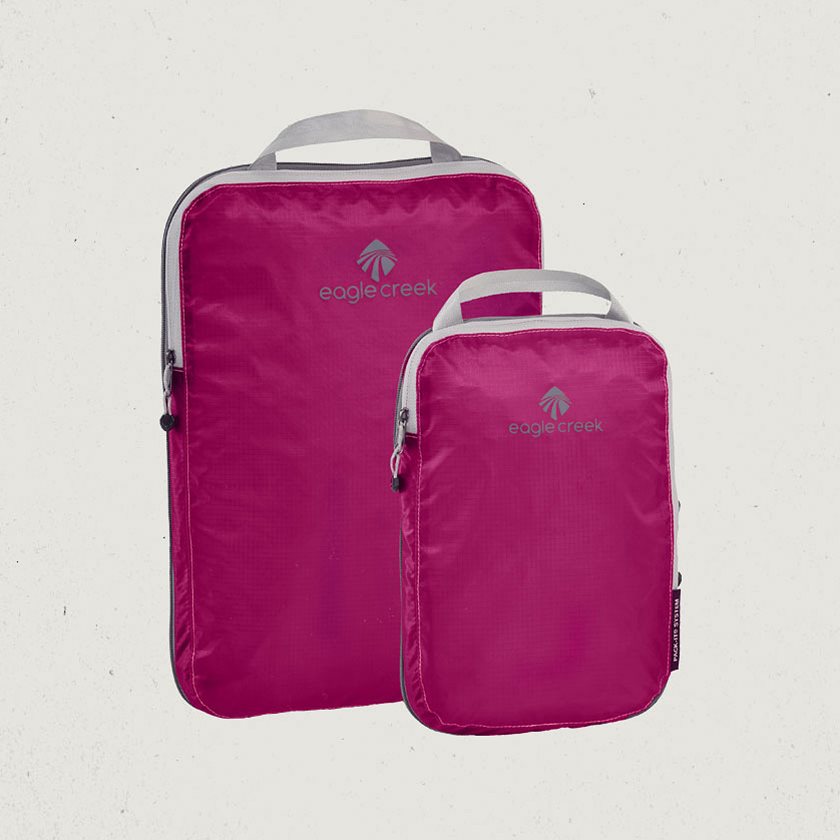
Photo: © Eagle Creek
|
|
|
Eagle Creek's Pack-It Compression Cube
Set is a pair of stuff sacks with
zippers for packing loose gear - clothes
or any kind of soft travel accessories.
They are designed with a nylon coil
double zipper system - one zippered
opening for inserting your stuff into
the single main compartment, while the
second zipper expands or contracts the
total capacity as needed. Eagle Creek
calls the large size (7.5 L) a "cube"
and the small (3 L) is the "half cube":
they are identical in appearance and
functionality except for size. Both are
made of ripstop silnylon
material and have a carry handle at the
top. The accompanying hang tag
states that the Cube Set bags are stain
and water-resistant, and washable. |
|
First Impressions
The first
thing I do with a new bag like this is test the
zippers, because if they're not sturdy and
well-made the bags won't last long in use.
On first use I found them easy to use and they
seem like they'll hold up under pressure -
especially the longer circumferential zippers
that form the compression closure against the
bag contents. As is always the case with
zippers on thin material, I had to watch that
the nylon doesn't snag in the teeth, which could
take a bit of practice when my bag is stuffed to
capacity.
I grabbed some t-shirts and
socks for a quick test, and found that closing
what I'll call the "insertion zipper" went
without a hitch. This zipper has smaller
teeth than the compression one, and fabric
covers the teeth when closed. It's
designed to open the bag across the top, from
about 2 in (5 cm) down from the top edge on one
side to about 6 in (15 cm) down the other side,
making a good-sized opening into which I stuffed
my clothes. Depending on how much I'm
putting into the bag, while inserting contents
the compression zipper can be closed, partially
unzipped, or completely open. But once
I've got the insertion zipper done up, I pressed
down on the center of the bag to help zip the
compression closure, being careful not to the
snag the bag material in it.
Both bags
are lightweight, and their silnylon ripstop
construction feels durable; all stitching looks
evenly done without any loose ends or threads
that I can see. Each built-in metal zipper
pull is large enough to easily grab with my
fingers, but they also have an extra
nylon/plastic pull attached to them to make it
even easier to get a hold of.
Although
these bags appear to be designed for mostly soft
items like clothes, with care some harder-edged
gear might be stored without damaging the
silnylon; that will be part of my test.
I'm looking forward to using the Pack-It
Compression Cubes in my daypack and backpack,
and for some non-camping travel that I have
coming up during this fall season.
|
|
Usage
I've been using the small Pack-It
Compression Cube continuously in my day pack
since the test began in early October, for
more than 20 day hikes and about 100 mi
(160 km) total distance hiked. I keep a
small collection of essential
gear in it, such as a flashlight, first aid
kit, water purification, etc. The large Pack-It has
seen less hiking use, but I did use it once for a
2-day backpack and a couple of overnight
non-camping trips.
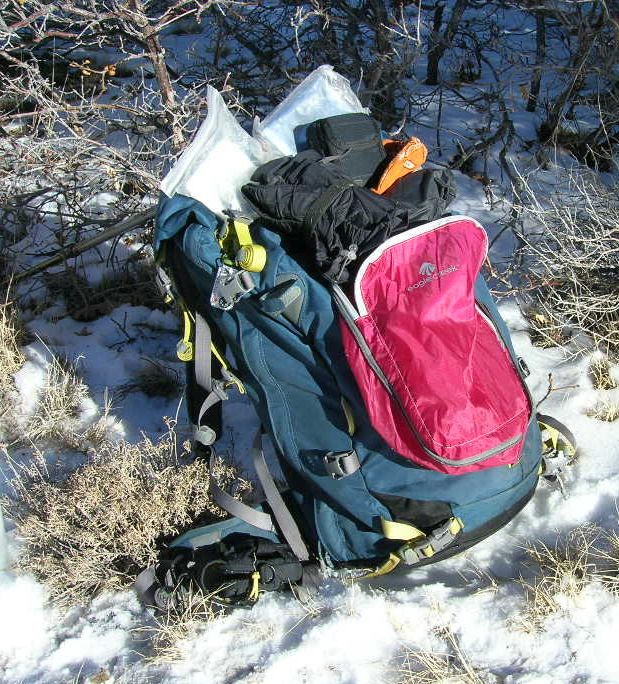 |
|
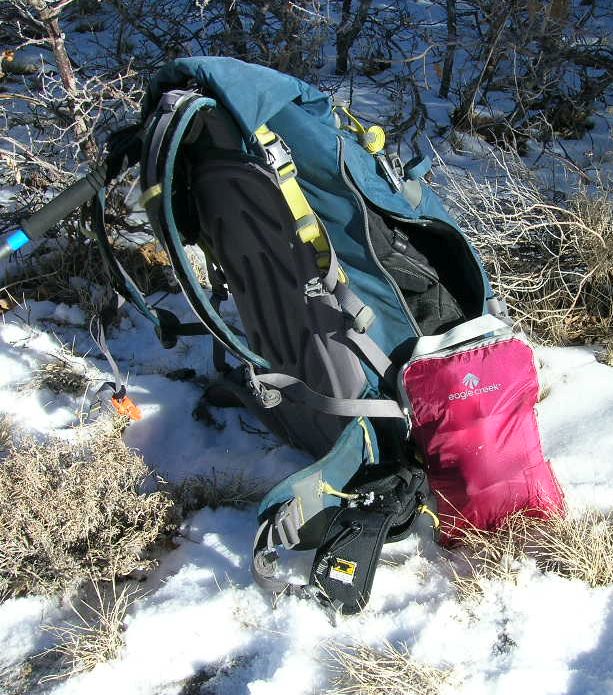 |
|
|
Small Pack-It unpacked |
|
Small Pack-It stuffed &
compressed |
|
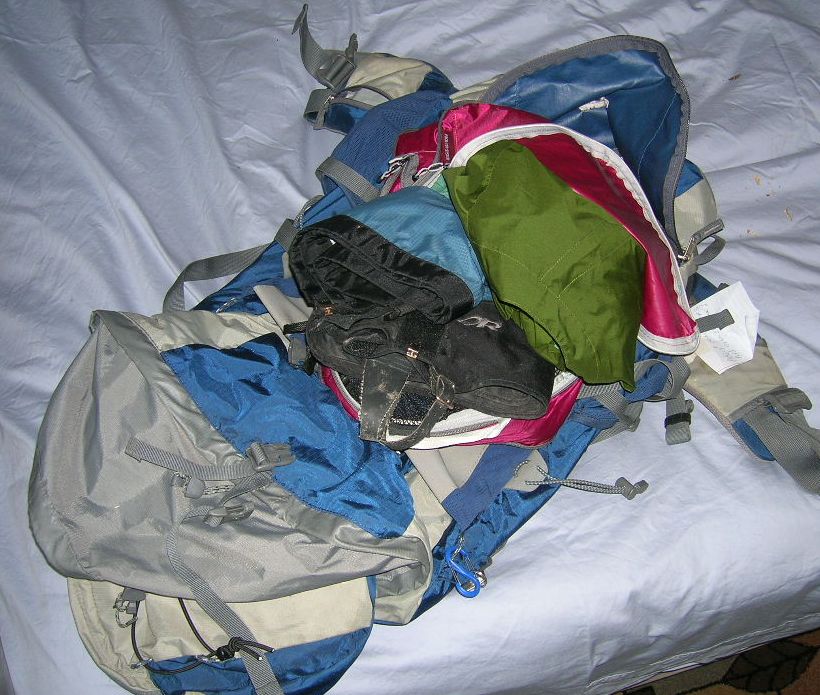 |
|
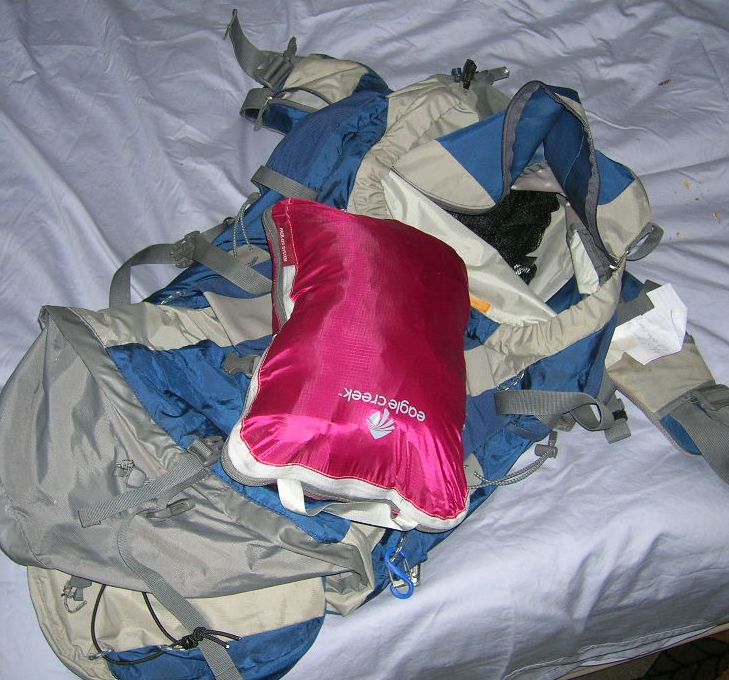 |
|
| Large Pack-It
unpacked |
|
Large Pack-It
stuffed & compressed |
|
|
Ease of Use
Since the large and
small Pack-Its are identical in functionality,
my observations about how easy they are to use
apply to both. The zippers ran smoothly, with
the only problem being when the sacks were
stuffed very tightly. I found I just needed to
work the zipper slowly down its track while
helping along the compression with my free hand,
plus pressing the inner nylon away to keep it
from becoming snagged. I don't count this
against the Cube's design, but I do credit the
smoothly running zipper that made closing the
tight sack easier than it might otherwise have
been.
I liked having two different
zippers on the Pack-It: one for opening/closing
the sack itself for its contents, and another
for the compression. Sometimes I'd leave the
compression zipper unzipped when I knew I'd be
reusing the sack a short time later and didn't
want to bother re-compressing it.
Durability
I found both Pack-Its
to be very durable so far and didn't see any
issue with wear for either the nylon fabric or
the zippers. The fabric is silnylon, which
is not as durable as other nylons; however, it is
ripstop and so that probably accounts for its
durability so far. At this point I also
don't find any loose threads or
fraying.
Color
The bright magenta color of
both of my Pack-Its was not my first choice, but
after a while I appreciated it - especially in my
day pack. The magenta let me find the sack more
easily while digging around inside my loaded
daypack even in low-light conditions.
Summary
I've gotten good use out
of my
small Pack-It Compression Cube - it's
been in my regular day pack for
practically this entire test period. It
holds some of my day trip essentials in a tight
package to save space, yet it's convenient to
open and retrieve the contents. I like the option
of using the compression zipper to minimize
space, yet I can also leave that zipper open and
just use the access zipper to keep everything in
place. Although the large Cube has seen
less use for me, it has the same advantages as
the smaller model but stores more stuff.
Pros
- lightweight
- zippers
are easy to use
- durable
Cons
- sometimes difficult to close the compression
zipper when fully packed
Acknowledgments
A big
thanks to BackpackGearTest.org and to Eagle
Creek for the chance to test the Pack-It
Compression Cube Set.
|
|
‹
Reviewed By ›
Bob Dorenfeld
Central
Colorado Mountains
|
|
|
|
|
|
|
|




